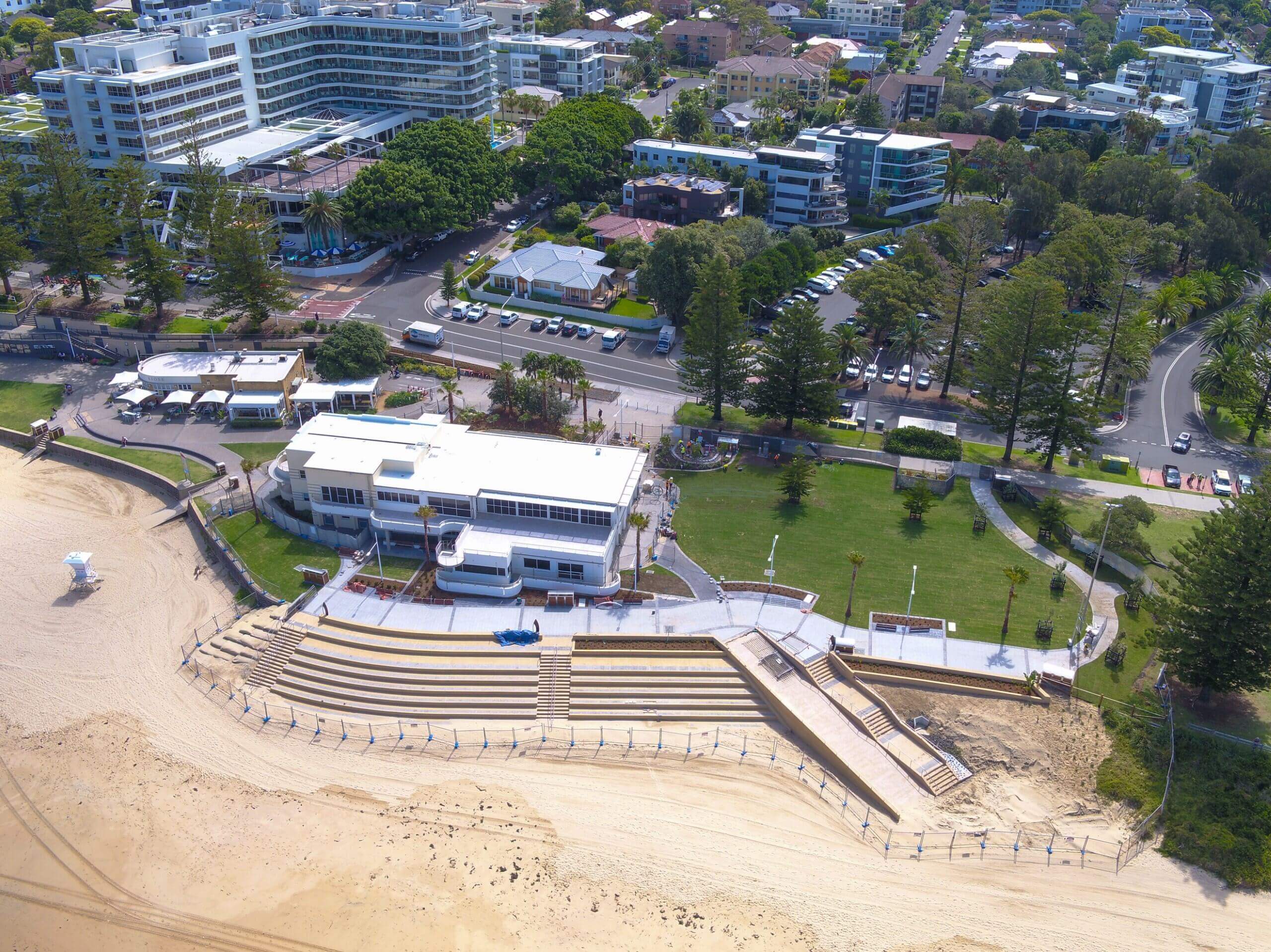The historic North Wollongong Surf Club has been revitalised and protected against coastal erosion with the completion of a new seawall. Finished just in time for the summer season, this crucial upgrade not only secures the 85-year-old surf club but breathes new life into the cherished, heritage-listed foreshore area.
Storm protection and improved facilities
The new seawall stands out with its tiered precast concrete seating and rock mattress, which replaces an outdated crib lock wall. It brings a fresh look with enhanced amenities including modern seating, improved fencing, elegant landscaping and upgraded lighting.
This upgrade fortifies the surf club and transforms the beach experience, making it more enjoyable for visitors.

Former Wollongong Lord Mayor Councillor Gordon Bradbery AM praised the design:
“The large, sand-coloured steps have been designed to improve accessibility to this popular beach and protect the North Wollongong Surf Club building and foreshore area from storm events and coastal wave damage.”
A positive response
The community’s response has been overwhelmingly positive. Locals have eagerly embraced the newly improved space, finding greater recreational opportunities and easier access. The surf club now enjoys direct beach access, and the foreshore has become a vibrant spot for both locals and tourists.
Overcoming challenges
Despite facing hurdles such as severe weather, heavy rains and supply chain issues, the project was a success thanks to strong collaboration between Wollongong City Council and the NSW Government.
The seawall was implemented in 2 carefully planned phases to minimise disruptions. Stage 1, from late 2020 to 2023, involved detailed planning and extensive community consultation, effectively balancing project goals with minimal impact on residents.
Looking ahead, Stage 2 is set to commence and be completed by 2026. This will extend the seawall’s protection further along the coast including replacing the aging seawall at the southern end and enhancing protection for the North Beach Bathers Pavilion.
Overall, this seawall project is a compelling example of how effective planning and collaboration can adapt infrastructure to meet future climate challenges. By incorporating climate-resilient features, the seawall protects important heritage sites and enhances public spaces. It prepares the community to tackle the impacts of climate change, ensuring lasting safety and resilience.
